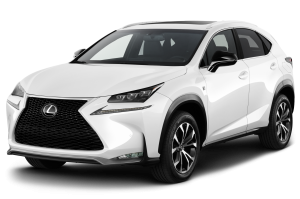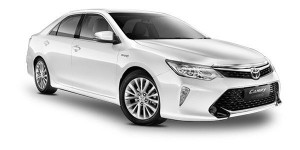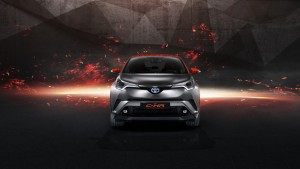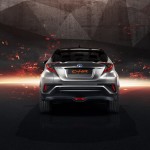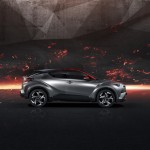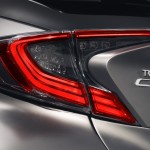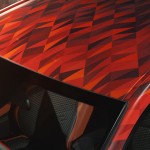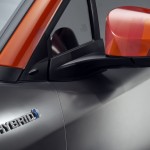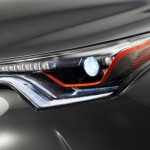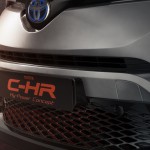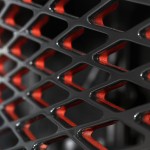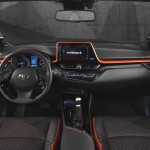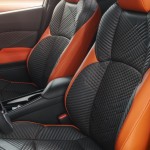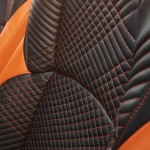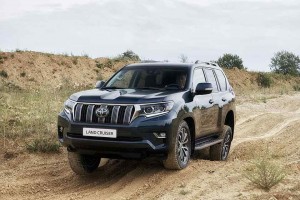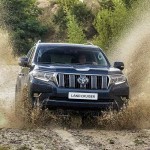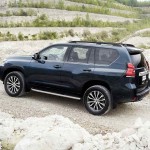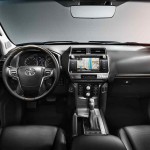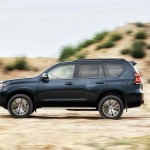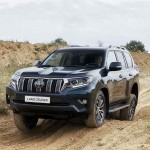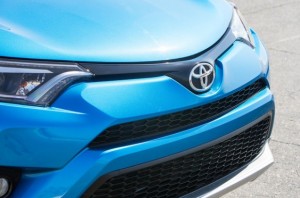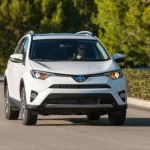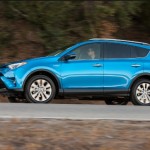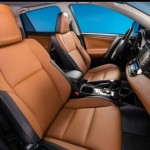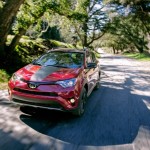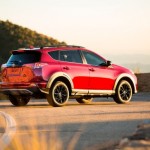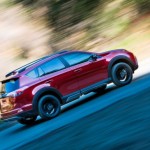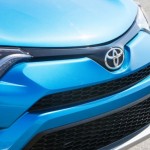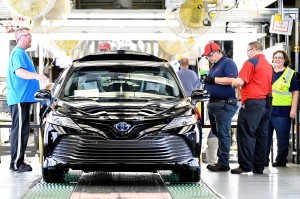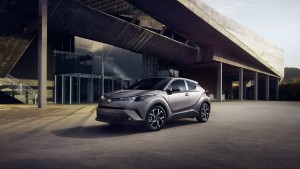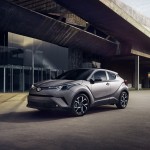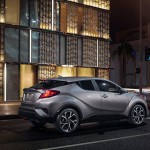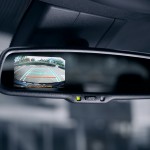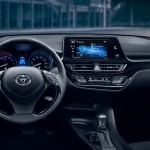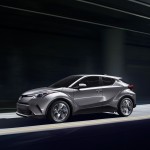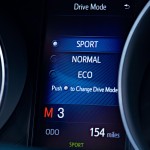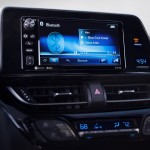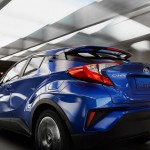Tag Archives: toyota
Lexus Will Debut Level 4 Self-Driving Tech in 2020s
Lexus, the luxury vehicle division of Toyota, aims to integrate level 4 self-driving capabilities to its cars by the early half of the 2020s. Then, Toyota plans to trickle it down to their standard mass-produced units after.
According to Automotive News, the decision of Toyota to put its new tech into its premium car segment first is because of its costly development. Ken Koibuchi, the company’s executive manager for automotive driving, explained that the feat entails fitting their cars with expensive sensors capable of long distance detection and advanced on-board computers. They have also put more priority on the basic safety elements of self-driving tech like lane-trace assist and pedal misapplication prevention systems.
The source noted that the self-driving Lexus might hit Japan first before it gets to the U.S. Again, the report stated that it had something to do with safety. It takes longer time to verify the complex traffic systems, driver behaviors and laws of the U.S.
Koibuchi pointed out too that many roads in the U.S. have fading lane markers and other indicators. He said that they are yet to make sufficient verification on the matter. Another reason is that most roads in Japan already have highly-detailed GPS mapping which many parts in the U.S. still lacks.
As mentioned in our earlier report, Toyota topped the reliability survey conducted by Consumer Reports for 2017. Lexus followed its mother company in the rankings.
The high rating was attributed to Toyota’s meticulous process of putting new features into its cars. As a way to minimize issues, it has been known to gradually and steadily introduce new technologies into its vehicles. Usually, the systems have already been introduced and tested by its Lexus vehicles. Basically, that’s what it is doing again with its self-driving technology.
At the Tokyo Motor Show, Lexus gave us a preview of what the future has in store for us with their LS+ Concept. The auto was an electric LS with self-driving features.
Toyota Tops Consumer Reports in Terms of Reliability
For the fifth consecutive year, Toyota emerged on top in terms of reliability. This was based on a survey conducted by Consumer Reports.
According to Fox News, Toyota took the top place among the 27 automotive brands surveyed by Consumer Reports. The brand was followed by Lexus, which also happened to be Toyota’s luxury vehicle division. The two exchanged places from their rankings in 2016. Another Asian brand, Kia, appeared in the top three spot of the study.
US brand Cadillac was listed as the worst among the 27 brands researched. Then, GMC and Ram were in the 26th and 25th places, respectively.
The source noted that the meticulous approach of Toyota in introducing new technology in its vehicles mostly contributed to its reliability. The Japanese brand has been known to implement new tech gradually and steadily in its new models. This was in contrast to the other brands featured in the survey, which garnered low scores because of complaints in their infotainment systems and new transmissions.
The report singled out the Toyota Camry sedan as an example. The latest model of the car possesses an eight-speed transmission gearbox. The system was first tested in the Highlander SUV.
Kia was two spots up from last year. Again, this was because of their decision not to rush things up when it comes to putting new tech in their vehicles. Most of the technology in their new models today first came out in their sister brand, Hyundai. The Kia Niro hybrid had the highest point in reliability among the other units in the brand’s lineup. Unfortunately for Hyundai, they dived three spots down to number 10 this year.
The biggest climber in this year’s survey was Chrysler. The brand was up by 10 positions compared to last year, thanks mainly to the positive remarks in its Pacifica minivan. Acura plunged the deepest by seven spots because of its new models’ transmission issues.
Toyota And Honda Caught Up in Kobe Steel Scandal
Kobe Steel, operating under the brand Kobelco, offers a wide range of products. Its main products include steel, titanium, aluminum and copper. It is a multi-billion company that caters even to giant automotive brands.
However, with the recent scandal plaguing it, automakers have launched their probe to identify their vehicles that have been affected. Toyota and Honda are now investigating on the matter to protect their customers and preserve their business interests.
The issue broke when Kobe Steel found out that their personnel have been giving false information in terms of the strength and durability ratings of their metal products. The incorrect data allowed the company to continuously meet the different quality standards required by their customers and by law. The problem is that it has been uncovered that most of their products were substandard.
Toyota is now worried about the aftermath of the shocking revelation as they have been using the aluminum produced by Kobe Steel in the doors and other body panels of their vehicles. The company believes that they have been doing that in the past decade.
On the other hand, Honda is also caught up in the nasty situation. The Japanese automaker admitted to using Kobelco metals in their doors and hoods.
It is believed that Mazda and Mitsubishi are in the mix as well. The problem may not be confined in Asia alone as the same company is the source of some materials for the vehicles of Nissan, Subaru, Ford and General Motors too.
While there are no reports of accidents or safety concerns centering on the subject yet, Toyota and Honda claimed that they are rapidly working to identify the models that have been affected. The issue might result to a massive recall similar to the Takata airbag scandal, and not to mention, numerous lawsuits from affected parties.
Toyota Hybrid Pickup Is Still Possible
The recently concluded State Fair of Texas proved to be the perfect venue to introduce and possibly even tease the future of pickup trucks. Japanese automaker Toyota is looking to star in the perfect headline by, as of today, studying the possibility of making a hybrid pickup.
Right now, what we’re sure of is what Ed Laukes, the group’s vice president of marketing, told Automotive News that the new Toyota Tacoma will feature upgraded powertrains. That will be part of the superb performance and marketability of the incoming Tacoma.
But when asked about the possibility of hybrid pickup trucks, Laukes was also quick to answer: there was no reason why hybrid pickup trucks shouldn’t be considered. Remember, there is also the need to meet CAFE standards. CAFE stands for Corporate Average Fuel Economy and refers to the regulations in the United States that aims to improve average fuel economy of cars and light trucks.
Even the president of Toyota Canada believes that there is room for hybrid pickup trucks in the future. Earlier this year, Larry Hutchinson said that “we’ve looked at it seriously” even if there’s little to no demand for hybrid trucks today.
Although the statements came from top Toyota officials, these shouldn’t ring true unless a concept is pushed through. Come to think of it, that may even remain as a mere concept since there is a long road between an idea and the presence of the truck in an actual showroom.
And yet, we want to believe that this particular gossip is true for the simple reason that hybrid pickup news has a prolonged stay in the rumor mill. This is one speculation that just won’t go away. You can’t blame people for being pessimistic about this. There is a history of disappointments that started with the Toyota A-BAT concept hybrid pickup in 2008 and the scrapped collaboration with Ford in 2011.
Still, back then, the two biggest automakers in the industry promised to bring into fruition a hybrid pickup truck. Toyota, at least, seems to have confirmed that studies are being made already.
Toyota C-HR Hy-Power Concept Is The Ideal Car For Millennials
Since it was launched in 2016, the Toyota C-HR became one of the company’s most popular crossover because of its affordability, its size, and its fuel-efficient engines. It doesn’t have a cult following like Honda’s CRV, but C-HR continues to stand out because of its stylish and youthful design.
Now, a team of designers from ED2, Toyota’s European design studio, came up with the Hy-Power Concept that added features both inside and out and updated the hybrid to a more powerful drivetrain.
The Toyota C-HR Hy-Power Concept was unveiled at the 2017 Frankfurt Motor Show. The moment you set eyes on it, you’ll know why it is a big deal if it sees production. Basically, the concept is like a personalized C-HR and the design is actually doable and possible and not at all out of this world compared to other concepts.
Exterior
The first thing the design team did is to fit the C-HR with a new paint called Dark Carbon. The purpose of this is to enhance the interplay between the muscular surfaces and the sharp lines. Dark Carbon is essentially a silver hue in a matte finish. It is then paired with a gloss black front lip spoiler, nose grille, and wheel arch trim, all of which contribute to a more aggressive appearance.
More, the concept features dark chrome in the headlamps, 20-inch alloy wheels, and Burning Orange highlights in the lower grille, side mirror caps, A-pillars, and roof.
Interior
The C-HR HyPower concept is definitely sportier inside compared to the current generation. There’s a dark versus orange theme going on in the cabin that features black seats with orange headrests and bolsters. The seats have an asymmetrical quilting pattern on the seatbacks, cushions, and door panels in bright Burning Orange yarn.
Drivetrain
All details are still under wraps for the new drivetrain under this concept’s hood. What we know now is that the concept will be equipped with a hybrid powertrain that can produce 122 horsepower .
3 Key Features of the 2018 Toyota Land Cruiser Prado
The Toyota Land Cruiser Prado, which is a midsize member in the Land Cruiser range, just got updated. It’s a far cry from the massive Toyota Land Cruiser that is being sold in other markets. For this year, as shown Tuesday during the 2017 Frankfurt Motor Show, the Land Cruiser Prado is made more refined.
Promising to bring safer tech features, the Land Cruiser Prado that made its debut at Frankfurt also received a modernized exterior and cabin.
1. Exterior
For a sharper and more modern look, the Land Cruiser Prado’s grille and headlights have been revised with the headlights’ main beams being repositioned to avoid damage from obstacles presented by off-road driving conditions. The hood and front fenders also received some treatment as they have been reprofiled to aid visibility.
The lower corners of the front and rear bumpers are now angled upwards to improve off-road maneuverability. The redesigned rear also has new lamp clusters.
2. Interior
The cabin of the Land Cruiser Prado is definitely more refined and upscale than previous generations of the Land Cruiser, thanks to the upgrade on the instrument cluster, the switchgear, and the center stack. The seats are covered in a luxurious cream-colored leather that goes well with the steering wheel wrapped in black and tan. The interior definitely spells luxury and comfort.
3. Drivetrain
The powertrains available for the Land Cruiser Prado will depend on the market you are coming from. It will be offered in either turbocharged inline-4 or V-6 engines. The inline-4 can be paired together with gasoline or diesel while the V-6 engines will be matched with gasoline only. Buyers can choose between a manual or an automatic transmission.
The safety features are the ones the Land Cruiser Prado is boasting about. The technology includes autonomous features (depending on the market), collision warning, adaptive cruise control, rear cross traffic alert, automatic emergency braking, lane departure warning, and blind spot monitor.
Expect the 2018 Toyota Land Cruiser Prado to start its deliveries this November.
8 Things You Can Expect From The 2019 Toyota RAV4
The Toyota RAV4 is looking to claim the best-selling crossover for the Japanese brand. It has surpassed Camry in sales during the first half of 2017, so we are looking forward to what it has in store when the upgraded 2019 Toyota RAV4 finally arrives.
1. More Powerful
The 2019 Toyota RAV4 is going to be powered by a four-cylinder engine though without a turbocharger. The current RAV4 can produce 176 horsepower and 172 lb-ft of torque, and it is fitted with an eight-speed transmission.
2. Another Hybrid
The 2019 Toyota RAV4 Hybrid will be coming back to compete with the Rogue hybrid and the introduction of the CR-V Hybrid that will be arriving in US shores soon.
3. Fuel Efficient
The 2019 Toyota RAV4 promises to be more economical in terms of its use of fuel. Currently, the 2017 RAV4 is EPA-rated at 23/29-30 mpg city/highway with front-wheel drive and 22/28 mpg with all-wheel drive.
4. TRD Sport Variant
The 2018 Toyota RAV4 Adventure introduced a Top Prep package that featured few visual upgrades, making the RAV4 Adventure different from the usual RAV4 though not that much. Toyota is trying to increase the reach of its TRD sub-brand, so we might be seeing a RAV4 TRD Sport trim or another RAV4 Adventure model.
5. Roomy Interior
You will be surprised at how much space the new RAV4 can offer you. It has one of the roomiest interiors ever seen in a crossover, though the RAV4 will begin switching to a new TNGA architecture.
6. Platinum Models
For those who want the Platinum trim, you can expect a premium experience with its rear-seat vents, panoramic glass roof, a color head-up display, and rear cross-traffic braking.
7. Driving Experience is Better
This new midsize sedan was much more improved in terms of driving and handling experience. The competition remains to be the Mazda CX-5 and Honda CR-V.
8. No RAV4 Two-Door
There’s no way the RAV4 would have a two-door version again because Toyota doesn’t look like it would sacrifice the spaciousness we’ve come to love with the RAV4.
Production of Toyota Camry Starts in U.S.
The new Toyota Camry is ready to go on sale in the United States by summer. As of June 28, the first batch of the car already rolled out from the company’s production line in Georgetown, Kentucky.
According to Motortrend, the company used $1.33 billion for the assembly of the Camry under the Toyota New Global Architecture or TNGA. The architecture allows the automaker to reduce production costs by about 20 percent. The Camry is the first car of the brand to utilize the platform and technology provided by the TNGA.
The report said that Toyota hired additional 700 employees in line with the production of the Camry. The Kentucky plant has already produced more than 11 million vehicles, including 8 million Camrys. It is presently the largest plant of Toyota in the world. The facility builds the Camry, Camry Hybrid, Avalon, Avalon Hybrid, and the entry-level luxury car model, the Lexus ES 350.
The new Camry carries a 2018 model year. It was revealed at the 2017 Detroit Motor Show. The vehicle offers a facelifted exterior with bolder design coupled with lower center of gravity, quieter interior, more rigid body, more advanced safety features, new tech and more powerful gas engines. The petrol-fed models of the car is matched with the new eight-speed transmission of the automaker while its hybrid class gets a Continuously Variable Transmission or CVT.
The source noted that the Camry is the second best-selling model of Toyota in the U.S. during the first half of the year. The RAV4 is currently the brand’s most in demand passenger vehicle in the country.
As of the May data of the company, 147,434 Camrys were sold going back to the beginning of 2017. It’s a pretty decent figure but the report pointed out that the numbers are down by 12 percent compared to the record reflected during the same period of last year.
Should You Buy the 2018 Toyota C-HR?
There is a lot of hype surrounding the 2018 Toyota C-HR. The crossover is being marketed for its striking style, decent performance and low payment options.
So is the car worth its advertised $22,500 starting price?
Design
The C-HR is both futuristic and sporty-looking. The hood, headlamps, radiator grille and front bumper resemble the ones carried by the RAV4. However, the C-HR is more compact in appearance due to its chopped off roof and it has a smoother body compared to its SUV counterpart. The rear of the crossover is pretty sleek with its extended roof spoiler and bootlid spoiler. The rear passenger door of the vehicle is unique too.
Despite the smaller design compared to the RAV4, the C-HR can comfortably fit four adult passengers. There is also plenty of headroom for the occupants of the vehicle.
Engine
The C-HR is equipped with a 2.0-liter inline-four engine. The output of the unit is 144 hp and 139 lb-ft of torque. The power of the car goes to the front wheels and it is distributed via a continuously variable transmission that allows it to have enough acceleration during climbs, predictable responses, mild noise and modest level of vibrations.
The crossover has fuel economy rate of 44.8-74.3 mpg. The CO2 emissions of the vehicle are rated at 134-87 g/km.
Tech
Among the notable technologies found in the auto are the standard active-safety systems providing the vehicle’s adaptive cruise, lane-keep assist, automatic high beams and pre-collision braking. The said elements are usually provided by other competitors as optional features.
Recommendation
Overall, the Toyota C-HR may be along the average grade when compared to its rivals. Motor1.com recommended that potential buyers of the crossover should shop around for better alternatives first before settling down for it.
Toyota C-HR Pictures
Check out the photos of the Toyota C-HR in the gallery below:
Toyota Remains the Most Valuable Car Brand in the World
Toyota retains its status as the most valuable car brand in the world. The company toppled the likes of luxury car giants like Mercedes-Benz and BMW to keep its position.
According to Autoweek, the Japanese automaker’s value dropped by three percent to $28.7 billion. The decrease was attributed to the tough currency rates, in addition to the company’s investments and increase in labor costs. Despite the setbacks, Toyota topped the vehicle segment of the BrandZ Top 100 Most Valuable Global Brand study made by market researcher Kantar Millward Brown.
Brown said Toyota is still viewed by customers as a reliable brand with quality value. Even with the recall issues going on, Toyota car owners gave positive reviews to their cars.
Based on the report, the study was first conducted 12 years ago. Since then, Toyota has landed in the number one rank 10 times.
In our earlier article, Toyota projected that further losses in revenue and net income are expected for the current fiscal year, which ends in March 2018. The company, through its CEO Akio Toyoda, defended that the slump is also in line with their vision to put more priority in stabilizing their future investments rather than focusing on short-term profit.
The Toyota CEO added that to safeguard the company’s future, they created an internal division called the Toyota Research Institute. The new division aims to work on futuristic technologies like the development of electric and hybrid vehicles as well as a potential autonomous car.
BMW and Mercedes landed on the second and third spots, respectively. BMW fell in value by eight percent to $24.6 billion while Mercedes rose by four percent to $23.5 billion.
On sidelines, Tesla seems to be catching up fast in the global car brand rankings. The company just jumped from number 10 last year to number 8 at the present, thanks to an increase of brand value by 32 percent to $5.9 billion. The car maker overtook Land Rover and Porsche to secure its new place in the hierarchy.

